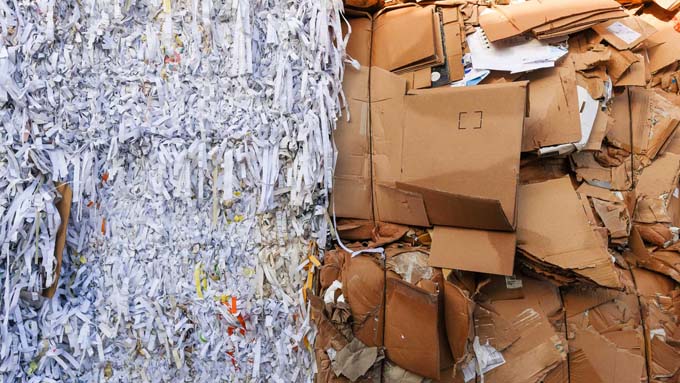Trade Day 2022: Swiss traders with full order books
Good forecasts on Trade Day 2022: Currently, Swiss trade is still developing better than the global economy. However, according to Prof. Dr. Jan-Egbert Sturm, Director of the KOF Swiss Economic Institute at ETH Zurich, an adjustment to international trends is to be expected sooner or later.

The global economy recovered rapidly after the pandemic. This is shown by comparing the financial crisis of 2008/2009 with the pandemic years. While in 2008 the global economy contracted by an unprecedented 4%, during the pandemic the global economy contracted by 10%. But in both phases, the economy returned to pre-crisis levels within about a year and a half. The global macroeconomic situation is therefore better than expected, explained Prof. Dr. Jan-Egbert Sturm of the KOF Swiss Economic Institute at ETH Zurich on this year's Trade Day. The curve is weakening slightly, but it is still at a good level. The situation is somewhat different when the results of the international surveys among producers and consumers are considered. They assess the current situation as slightly gloomy; they expect a further deterioration in the future. Prof. Dr. Jan-Egbert Sturm put it in a nutshell: "From an international perspective, the mood is not good. The glass is half empty. This attitude is putting pressure on the economy."
Boom phase in Switzerland
The situation in Switzerland would be different. The hospitality and wholesale sectors report a slightly above-average business situation. The industrial and manufacturing sectors are booming. Switzerland is in a boom phase. While inventories in the retail sector were judged to be too large before the crisis, they are too small in 2022. A problem for the retail sector is that inventories are being filled worldwide. This is related to the simultaneous high demand from consumers and producers. This development favors the rise in inflation. Demand in the retail sector is largely intact. However, there is a shortage of skilled workers, as for example 55% of construction companies indicate in KOF surveys. Construction is an important customer of the trade. According to the surveys, construction companies could take on a larger volume of orders with more skilled workers.
Lack of primary products stops exports
For Swiss companies, future developments harbor similar uncertainties as for companies in other parts of the world. One problem is the lack of intermediate products. This was confirmed by Carl A. Ziegler, President of swiss export. Exporting companies are also pleased with full order books. Despite war, inflation and problems on the supply chains, the majority of companies are optimistic, he said. However, the lack of preliminary products is having a very negative effect, he stressed: "If individual parts are missing, entire plants cannot be exported. Companies must therefore no longer rely on just one partner, but must find new suppliers, in some cases in other regions than before." Another challenge is the issue of sustainability. It is true that the exporting companies are mainly SMEs with a high standard of sustainability. Nevertheless, the industry wants to improve further. Swiss export has therefore launched the Ecomove project, which supports the companies in their efforts.
Consumers must pay more for sustainability
Sustainability is also a key issue in the textile trade, as Carl Illi, President of Swiss Textiles, explained on the Day of Trade. The crux of the matter, however, lies with consumers. Because more sustainability costs money. The question is: Will consumers pay the higher prices? More sustainable sometimes means producing closer to home. However, this does not mean Central Europe. The approval and construction of factories alone takes longer here than in other parts of the world.
It is still true that around half of the world's textiles are produced in China. In the EU, there are efforts to introduce the carbon footprint and to show it on product labels. However, Carl Illi made it clear: "The textile industry would already be more sustainable if consumers paid the higher prices. New production machines need 30% less water and less electricity. But every new machine must first be earned." There is one obstacle to this. It is true that the textile industry also has full order books worldwide. Consumers are flocking to the stores. But goods are becoming more expensive overall, and not because of increasing sustainability. For example, the textile industry, which is highly dependent on energy, depends on low electricity costs. Carl Illi explains, "Globally, I don't see any producer producing cheaper today than two years ago." The president of Swiss Textiles also expects container prices to remain high. Several costs are rising for textile manufacturers. Old stocks are used up, and new stocks are becoming more expensive. As a result, textile suppliers are passing on the inflation to consumers. In parallel, a shift can be observed in the textile machinery market. The high Chinese cost of electricity and the shortage of labor caused by the lockdowns has encouraged the search for alternative producers. Countries such as Pakistan, India, Vietnam, Turkey, Cambodia and South America are making new investments in textile machinery manufacturing. It remains to be seen how this will affect the issues of sustainability and prices. In any case, the Swiss association is making the industry fit for the future with the new Swiss Textile Recycling Ecosystem. Now it all comes down to the consumers.
Source and further information: Trade Switzerland









